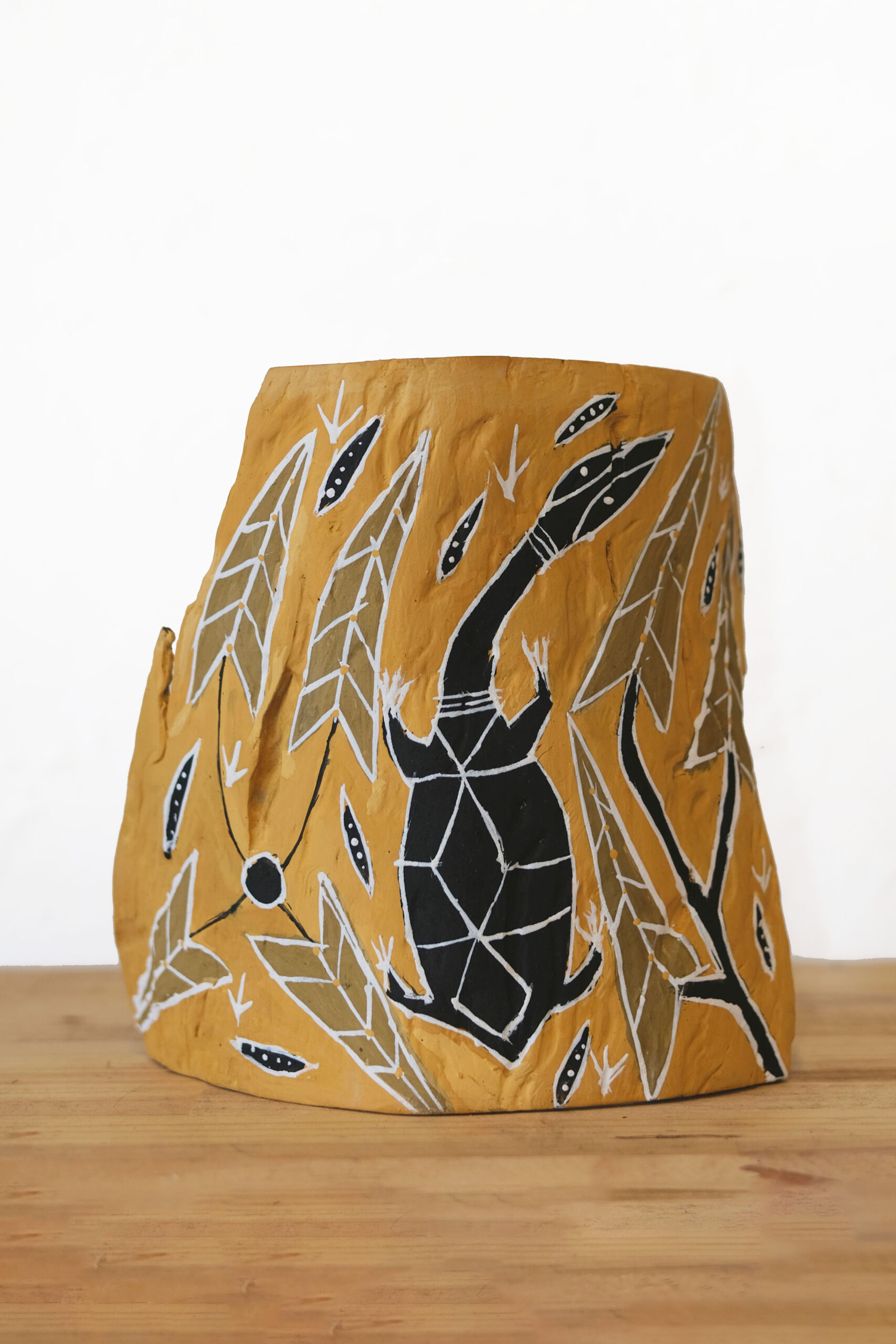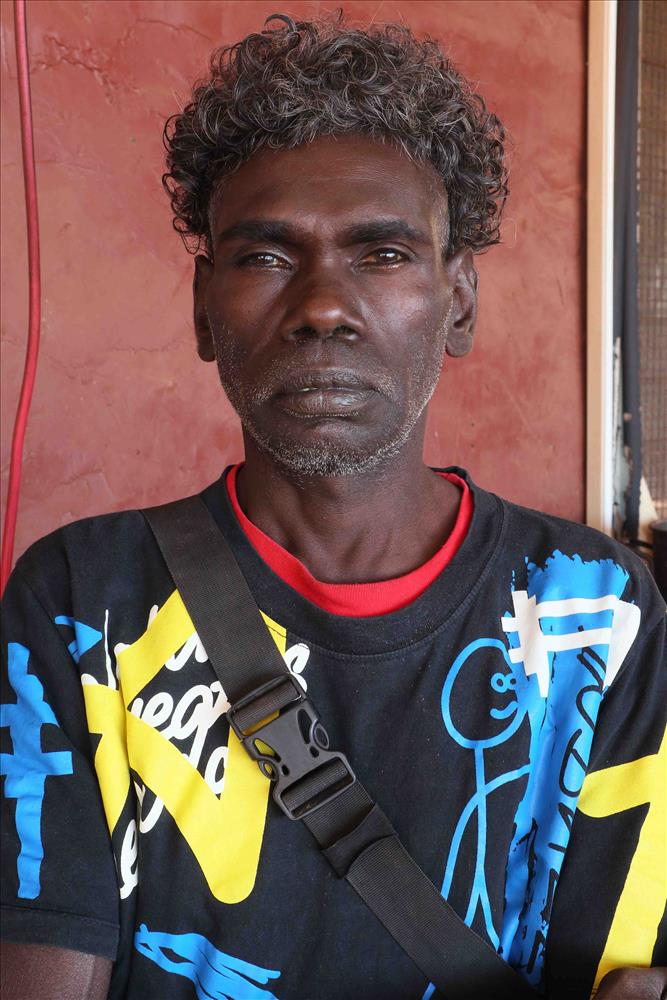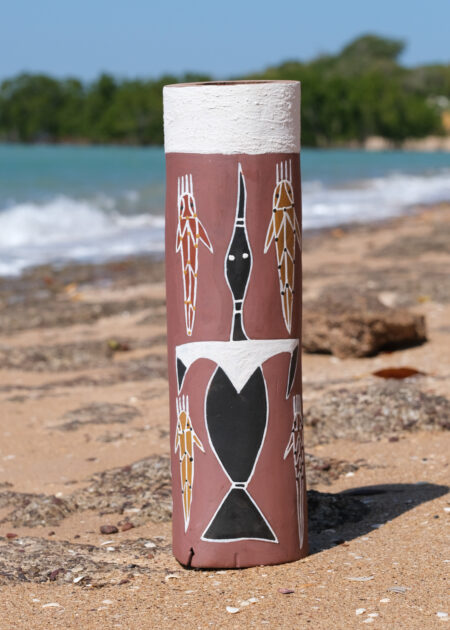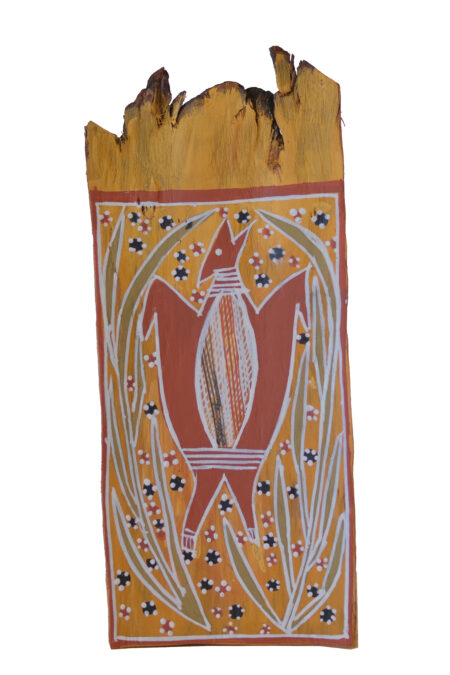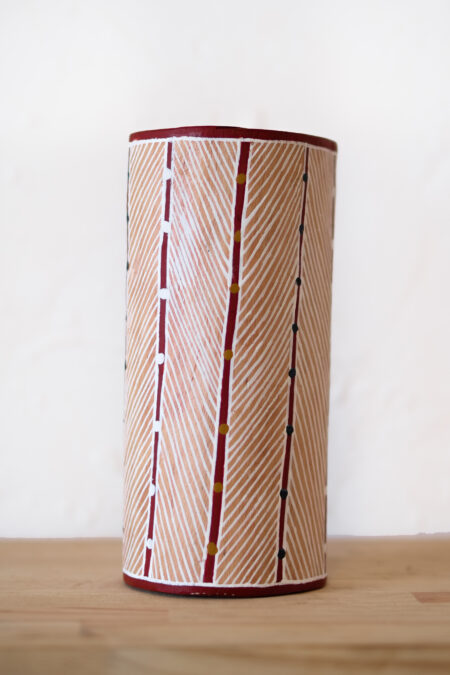Description
This painting belongs to the artist’s Ganalbiŋu Malibirr clan and depicts his ancestral heartland, the homeland of Ŋaliyindi that centres on a great billabong of the same name. This site is a yindi yäku wäŋa, or big-name place, meaning its sacred waters are a significant site associated with the travels of many of his clan’s primary ancestors. Ŋaliyindi is situated on the tributaries that flow around Muwaṉgi, known as the Arafura Swamp in English, which is the largest freshwater ecosystem in the southern Hemisphere and an important international bird migration site and crocodile nesting site.
This includes many of the animals you can find there today, such as nyaŋura (long-necked turtle), nyuŋala’ (oxe-eye herring), djaykuŋ’ (File snake), the edible ŋawk’ŋawk (waterlilies), djalŋiny (leeches). and the much-coveted gurrumaṯtji (magpie goose), also known as gumaŋ in the Ganalbiŋu language.
The small footprint-like figures represent wokara, the razor-sedge grass that grows around the banks of Ŋaliyindi when the waters are up. The grass is said to sing and whistle in the wet season winds, indicating to those nearby the presence of abundant freshwater. Sometimes this clan design also depicts waving räkay, another larger type of freshwater reed with edible seeds along its spines represented by coloured dots.
The edible corm, or root, of the ŋawk’ŋawk is a favourite food of both nyaŋura and gurrumaṯtji and is also an important ceremonial food for Yolŋu. In turn, both these animals are much sought after game in Arnhem Land and great prestige is awarded to hunters who can bring home bags of either of these. Be careful though, Djipurrtjun warns, ‘That nyaŋura, tasty one but real cheeky. He got sharp mouth [beak]. Maybe he bites you and maybe you are the food.’
